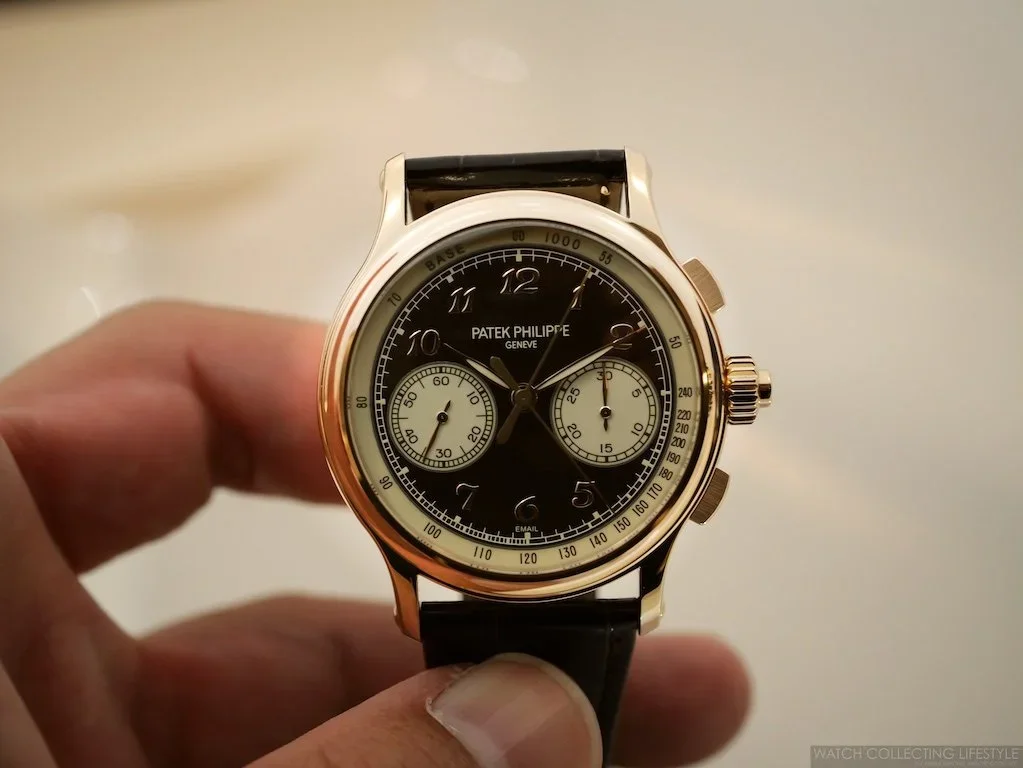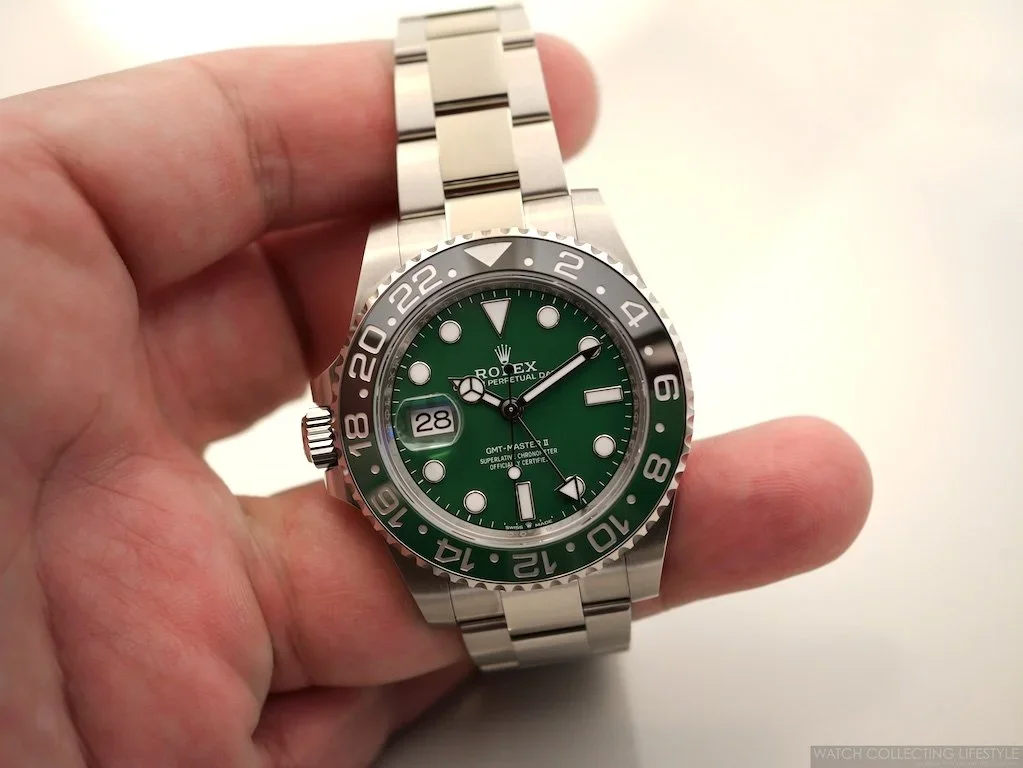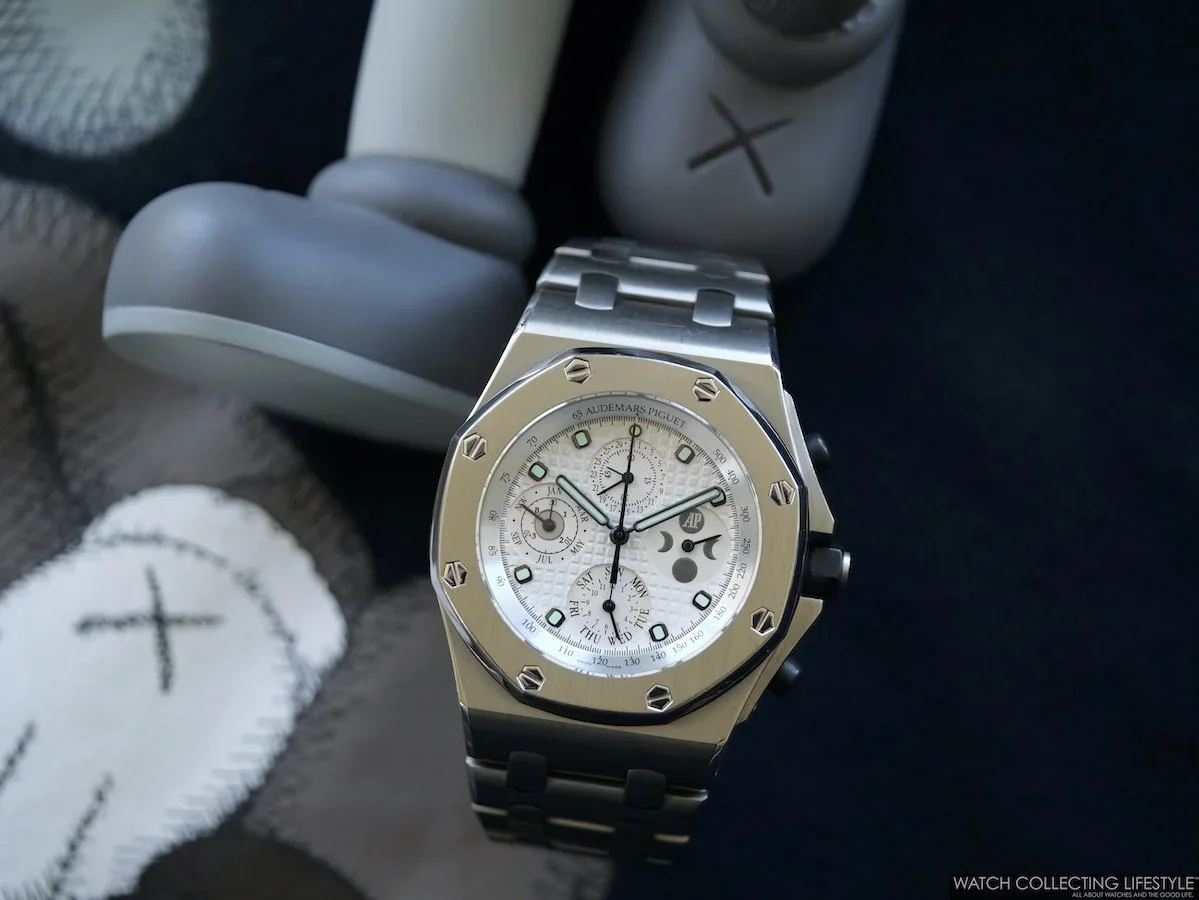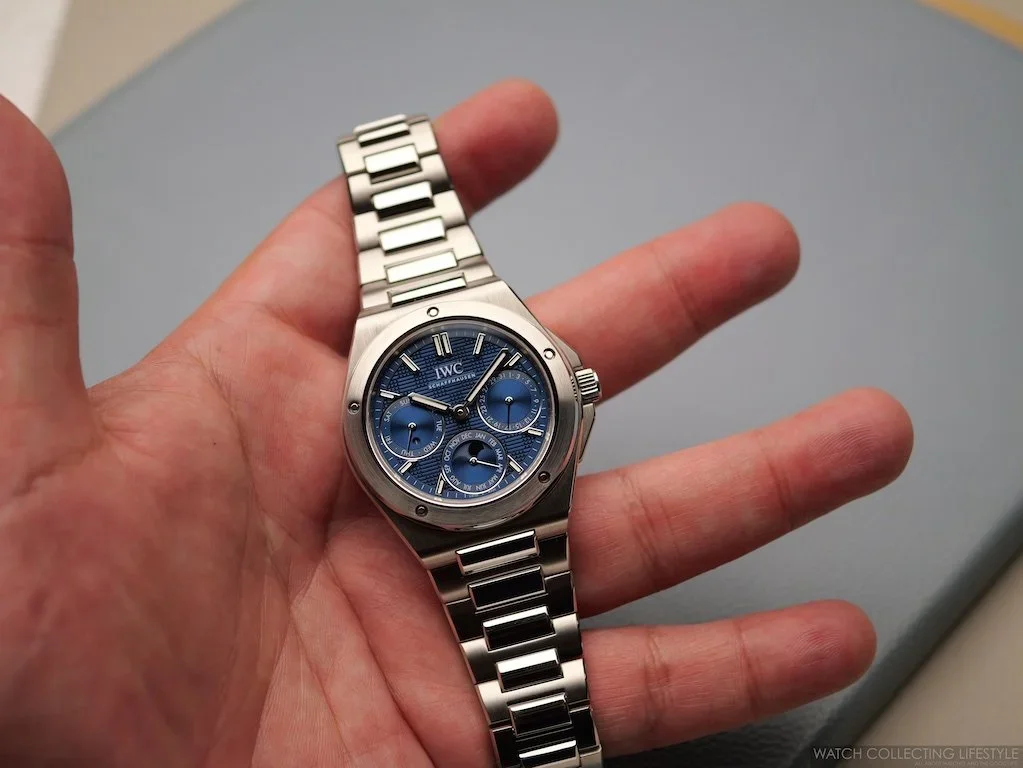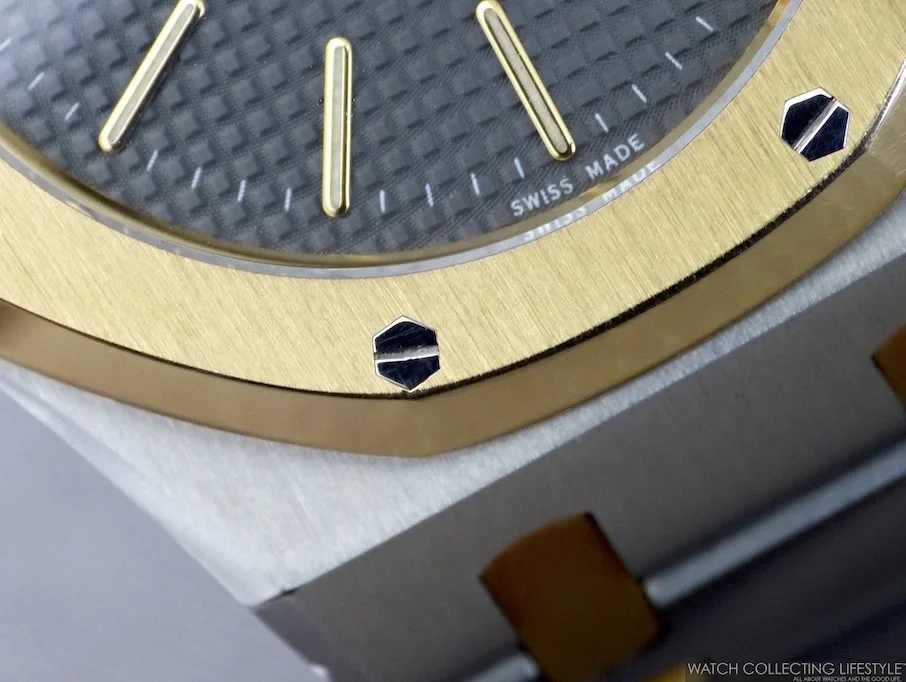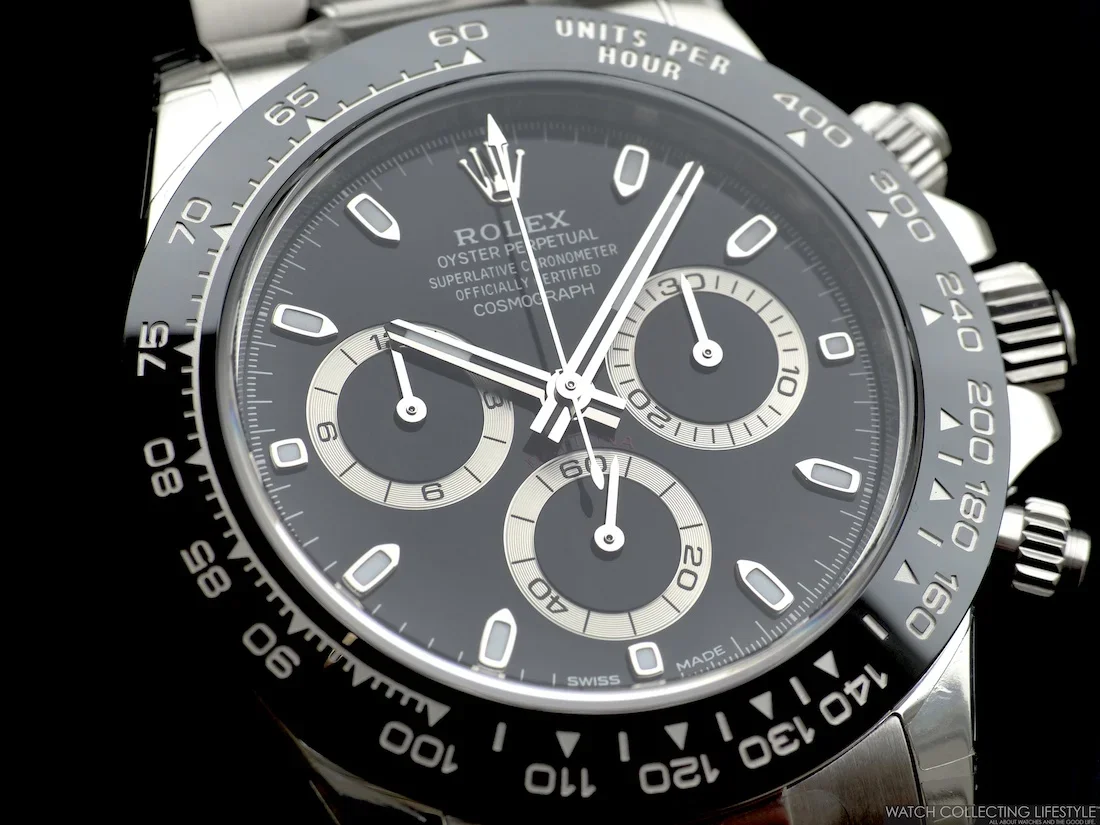Today, August 1, 2025, as we celebrate Swiss National Day, well, here we are. Not celebrating much, but concerned about the impact of tariffs on the Swiss watch industry and my wallet—especially the impact on advertising revenue for my publication and my future watch purchases.
Just when you thought the watch world couldn't get any more unpredictable, Trump drops a 39% tariff bombshell on Swiss imports that's about to reshape everything we know about collecting luxury timepieces in America up until today, and with a pricing bubble that was ready to burst.
I'll be honest, when I first saw the headlines, my immediate thought wasn't about geopolitical trade policy. It was about the Audemars Piguet Royal Oak Offshore Perpetual Calendar Chronograph that I have for sale, and what I should do as far as pricing. It’s also about the few watches that I’ve been eyeing as future purchases, and what this means for every collector's wallet moving forward. Because let's face it, this isn't just a trade story. This is about fundamentally altering the economics of watch collecting in the world's biggest luxury watch market.
The Numbers Don't Lie (And They Hurt)
Here's what we're looking at: Switzerland exports about USD 4.8 billion worth of watches to the US annually—nearly 17% of their total watch exports. We're not just their biggest customer; we're the market that's been keeping Swiss watchmaking alive while China stumbled through a 25% decline last year.
Now, with this 39% tariff, we're talking about a potential 12-14% increase in retail prices if brands pass through the full cost. Oh, and let’s not forget that the US dollar has collapsed against the Swiss Franc in the last three months like never before. When I was in Switzerland back in March and April, the exchange rate was USD 1.07 for a Swiss Franc. Today, it sits around USD 1.25 for a Swiss Franc.
Remember that USD 6,800 Seamaster you were planning on getting? You might be looking at USD 8,000+ now. While some of the tariffs might be absorbed by the large Swiss watch brands, the smaller ones—including the independents—will just pass the whole percentage to the end customer. That Holy Grail Patek you've been saving for? Well, you better hope it's already sitting in an authorized dealer's safe.
The kicker? This rate is more than double what EU countries negotiated—15%—, and it's among the highest globally. Switzerland got singled out in a way that feels almost personal.
What This Means for Collectors Right Now
As someone who's watched this industry evolve for more than three decades as a collector and a voice in the watch industry for over a decade, I can tell you we're entering uncharted territory. The immediate implications are staggering:
The Rush is Already Starting: Smart collectors and dealers are probably already making calls, trying to lock in purchases of inventory that was already shipped in preparation for the tariffs when it was first announced and preliminary discussed back in April. Though with shipping logistics, anything not already in transit might be too late.
Brand Strategies Will Fragment: Here's where it gets interesting from an industry perspective. Luxury brands like Patek Philippe, Vacheron Constantin, and A. Lange & Söhne have customers with relatively inelastic demand—they'll pay the premium. But what about the mid-tier Swiss brands that were finally gaining traction in the US market? Brands like Oris, Frederique Constant, or even some of the Swatch Group's more accessible lines could get priced out entirely.
The Gray Market Wild Card: This tariff only applies to official imports. The gray market, already a significant force in luxury watches, might become even more attractive. European dealers might suddenly find American customers very interested in "tourist purchases" during overseas trips.
The Collector's Dilemma
I keep thinking about what this means for our community. We've spent years building relationships with authorized dealers, understanding allocation systems, and playing the long game on certain pieces. Now we're looking at a potential seismic shift in pricing structures that could make some previously attainable grails permanently out of reach for many collectors.
The irony isn't lost on me that this comes just as the Swiss watch industry was stabilizing after years of post-pandemic volatility. Secondary market prices have already been correcting downward, down 5.7% in 2024 after brutal declines in 2022 and 2023. This tariff might prop up secondary values for watches already in the U.S. market, creating a weird bifurcated pricing structure. Concerned here about what my asking price will now be on that AP Royal Oak Offshore Perpetual Calendar Chronograph that just came back from service after 25 weeks.
The Brand Response Matrix
From an industry insider perspective, I'm fascinated to see how I think different companies will react:
Rolex: With their controlled scarcity model and sky-high demand, they can probably absorb or pass through costs without a significant volume impact. Although there was already a small price increase a few months ago. However, their U.S. dominance—estimated at 40% market share in luxury Swiss watches—gives them leverage.
Swatch Group: This is where it gets complicated. Omega might weather it fine, but what about Tissot, Hamilton, or Certina? These brands were crucial entry points for new collectors.
Richemont: Already struggling with a 13% decline in watch sales recently, they're facing a double hit. While brands like Vacheron Constantin, A. Lange & Söhne, and Cartier might be fine, others in the portfolio, like Piaget or even Jaeger-LeCoultre, could suffer.
Patek Philippe: Most likely planned and shipped as much product beforehand as possible. Also, their customer base with deep pockets will be just fine.
Independent Brands: This could be devastating for smaller Swiss manufacturers who were just building a U.S. market presence. Without the volume to absorb costs or the brand equity to command premium pricing, many might exit the US market entirely.
The Unintended Consequences
Here's what keeps me up at night: the U.S. doesn't have industrial watchmaking capacity. We lost that in the 1960s. So this isn't about protecting American jobs—it's about revenue generation at the expense of an entire collecting community.
Moreover, Swiss watchmaking's supply chain is impossibly specialized. You can't just move balance spring production to Germany or final assembly to Japan and call it a day. These tariffs essentially lock out a huge chunk of Swiss production without creating any domestic alternative. Also, with the Swissness law, you have to assemble and regulate the watches in Switzerland to use the “Swiss Made” designation.
What Collectors Should Do Now
If you're serious about watch collecting, here's my take on navigating this:
Reassess Your Wish List: That mid-tier Swiss piece you were considering? You might want to pull the trigger now or look at alternatives from Germany—15% tariff— or Japan —also 15%.
Think Secondary Market: U.S.-based pre-owned watches just became more valuable relative to new imports. The vintage market might see interesting dynamics.
Consider Travel Purchases: If you're planning any European trips, suddenly that duty-free shopping becomes a lot more attractive. Just remember the USD 800 personal exemption limit.
Keep an Eye on Fire Sales: Some dealers might liquidate current inventory rather than face the new pricing reality.
The Bigger Picture and the Bottom Line
Look, I get the trade policy arguments about reciprocity and trade deficits. But as someone who's spent years in this community, watching collectors build relationships with Swiss brands and craftsmanship, this feels like collateral damage on a massive scale.
The Swiss watch industry employs a very important number of people, and their entire business model has been built around serving global markets, especially the U.S. This isn't just about luxury toys for rich people, though it's certainly that too. It's about dismantling established trade relationships that took decades to build.
We're about to find out what happens when you impose prohibitive tariffs on a luxury category with no domestic alternative. My guess? We'll see a permanent shift in the U.S. watch collecting landscape. Maybe some small brands will exit entirely. Others will raise prices and accept lower volumes. The gray market will explode.
And for collectors? We're about to learn whether our passion for Swiss watchmaking runs deep enough to pay significantly more for the privilege—or whether we'll discover that German, Japanese, and other alternatives have been undervalued all along.
Either way, this isn't just another date on the calendar. It's the day American watch collecting might be changing forever, and those that are real watch collectors—and not just trying to flex with overpriced Daytonas and Pepsis from the secondary market—will show us what they are made of.
I guess we’ll just have to wait and see.


